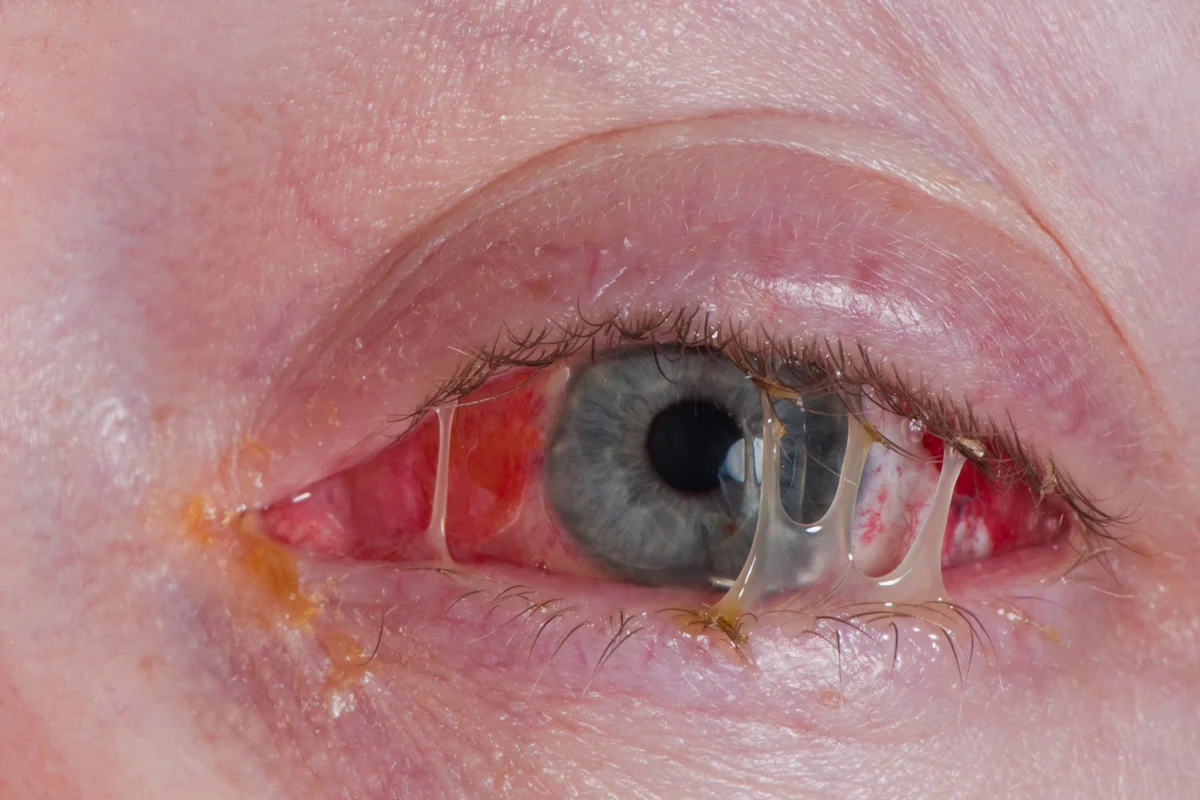Every year, millions of people are affected by the common illness known as “eye flu.” Eye flu infection is associated with conjunctivitis, which is also called pink eye.

Every year, millions of people are affected by the common illness known as “eye flu.” Eye flu infection is associated with conjunctivitis, which is also called pink eye. Eye redness is frequently caused by conjunctivitis, which is also a frequent complaint in primary care, urgent care, and emergency rooms. Any age, group, or socioeconomic status can be impacted by it.
The conjunctiva is a thin layer of clear tissue that lies over the white part of the eye and lines the eyelids. It also contains small blood vessels. When these vessels become inflamed, the eye appears red, hence why the disorder is called pink eye.
Conjunctivitis may be caused by a viral infection, a bacterial infection, allergies, or exposure to a foreign object. The most frequent causes of infectious conjunctivitis are viral conjunctivitis and bacterial conjunctivitis, while allergy and toxin-induced conjunctivitis are among the most prevalent non-infectious agents.
It may affect one or both eyes and is a very contagious disorder that can spread if one comes into direct or indirect contact with discharge from the eyes of an infected person. Acute conjunctivitis is defined as having a sudden onset and lasting four weeks or less; subacute conjunctivitis; and chronic conjunctivitis, which lasts more than four weeks.
Due to the chronic nature of the illness, depression has even been documented in some studies. Acute infectious causes (viruses and bacteria) are the eye illnesses that primary care physicians face the most commonly. Clinically, bacterial conjunctivitis and viral conjunctivitis are difficult to differentiate.
Signs and symptoms:
- Mild pruritus.
- Foreign body sensation.
- Mild photophobia.
The most prominent signs include crusted eyelids that are often matted shut, especially after sleep, generalised conjunctival infection, and either watery or purulent discharge from one or both eyes, but no loss of visual acuity.
How do you check for the flu?
- Redness or swelling
- Itching
- Tearing
- Discharge
- Sensitivity to light
- Swelling of the eyelids
- Pain
- Some may have Blurry Vision
Test and diagnosis
Following this, a detailed eye exam will be carried out by the ophthalmologist. Your eye examination will include the following:
- A visual acuity test to check your eye sight
- Examination of the conjunctivitis and external eye tissues with the help of magnifying tools
- Special eye tests to examine the inner structures of the eye.
Other than the eye test, your doctor may also request a test of the discharge from your eyes to make a more accurate diagnosis about the cause of conjunctivitis.
A blood test for an eye problem
Fluorescein angiography allows a doctor to clearly see the blood vessels at the back of the eye. A fluorescent dye, which is visible in blue light, is injected into a vein in the person’s arm. The dye circulates through the person’s bloodstream, including the blood vessels in the retina.
A doctor may diagnose cellulitis of the eye with certain scans or a blood test. They may also take a small sample of cells from the eyes or nose.
Treatment:
Though conjunctivitis clears up on its own within a week, early treatment prevents it from spreading to others around you. The treatment option prescribed to you will also depend on the cause of your pink eye. For instance, cases of allergic conjunctivitis and bacterial conjunctivitis are treated with medications as prescribed by the doctor.
Viral conjunctivitis, like a viral cold, has to be allowed to run its course, as no medications can cure pink eye caused by a virus.
In cases of conjunctivitis caused by foreign matter, such as exposure to certain chemicals, flushing of the eyes with saline and prescribed drops may be recommended.
Prevention:
- Avoid wearing contact lenses when you are suffering from pink eye.
- Use a cool or warm compress.
- Avoid allergens that worsen your condition.
- Keep your clothes clean.
Bathe and wash your eyes carefully before bedtime, especially if you have allergic conjunctivitis.
Some foods are avoided during the eye flu, like salty foods. An excessive intake of salt can result in water retention, which may cause puffiness around the eyes and worsen eye discomfort. Avoid salty snacks and processed foods during the flu. Spicy foods may irritate the eyes and exacerbate eye flu symptoms.
This article is jointly authored by Muhammad Hamza, Aziz Ur Rehman, Usman Ali, Shumaila Kousar, and Faisal Rehman from the University of Veterinary and Animal Sciences Lahore, Subcampus Jhang.